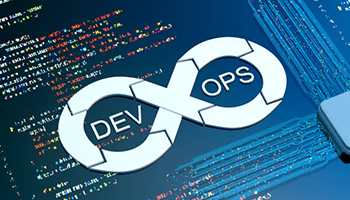At its core, DevOps emphasizes collaboration and communication between development and operations teams to create a continuous flow of value to customers. Automation plays a pivotal role in achieving this goal by streamlining repetitive tasks, reducing errors, and accelerating the software delivery process.
What is DevOps Automation?
DevOps automation refers to the use of tools and technologies to automate various tasks within the software development lifecycle (SDLC). This includes tasks such as:
- Building and testing code: Automation tools can compile, build, and run unit and integration tests automatically, freeing up developers’ time to focus on more complex tasks.
- Infrastructure provisioning and configuration: Cloud-based infrastructure can be automatically provisioned and configured with tools like Terraform and Ansible, eliminating the need for manual configuration and reducing errors.
- Deployment and release: Automated deployment pipelines can seamlessly deploy code changes to production environments, ensuring faster and more reliable releases.
- Monitoring and performance management: Automation can continuously monitor application performance and automatically trigger alerts and responses to performance issues.
Benefits of Automation in DevOps
- Increased Efficiency: Automation eliminates repetitive manual tasks, allowing developers and operations teams to focus on more strategic work.
- Reduced Errors: Automated processes are less prone to human error, leading to more reliable and consistent software releases.
- Improved Quality: Automation facilitates continuous testing and integration, leading to higher-quality software products.
- Faster Delivery: Automated workflows enable faster deployment of code changes, leading to quicker time to market and improved customer satisfaction.
- Scalability: Automation allows for the efficient scaling of IT infrastructure and services to meet changing business demands.
Examples of Automation Tools in DevOps
- Continuous Integration (CI) tools: Jenkins, GitLab CI/CD, CircleCI
- Continuous Delivery (CD) tools: Spinnaker, Jenkins, Argo CD
- Infrastructure as Code (IaC) tools: Terraform, Ansible, Chef
- Configuration Management tools: Puppet, Chef, Ansible
- Monitoring and Logging tools: Prometheus, Grafana, ELK Stack
Getting Started with DevOps Automation
- Identify key areas for automation: Analyze your current development process and identify areas where manual tasks can be automated.
- Choose the right tools: Select the appropriate tools based on your specific needs and technical expertise.
- Start small and scale gradually: Begin by automating a few tasks at a time and gradually expand your automation efforts as you gain experience.
- Monitor and iterate: Continuously monitor the effectiveness of your automation efforts and make adjustments as needed.
Conclusion
Automation is a critical driver of efficiency and agility in DevOps. By automating repetitive tasks and streamlining workflows, DevOps teams can deliver high-quality software faster and more reliably. By embracing automation, businesses can gain a competitive edge in today’s rapidly changing digital landscape.





